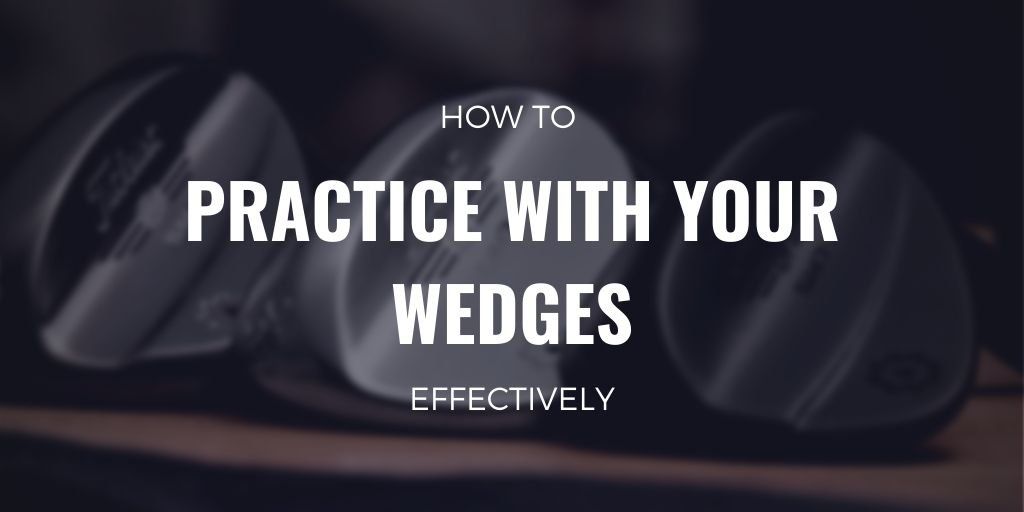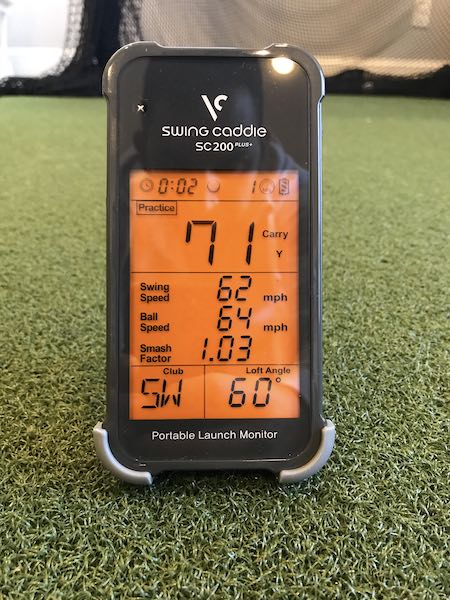
Wedge play is one of the more unique areas of golf compared to approach shots and tee shots. Your practice should reflect those differences.
This is an area of golf that can quickly lower scores for players of all levels. It can help you save more pars, but more importantly, help reduce double bogeys (or worse). Think of wedge play like a security blanket, or an insurance policy for your golf game.
Additionally, everyone can gain proficiency no matter their skill level or physical capabilities. You'll never hit a 330- yard drive like Rory McIlroy, but you can hit wedge shots like him from time to time.
Distance control is paramount with your wedges. Because you are closer to the hole, your dispersion (left to right tendencies) becomes less of an issue compared to your full swing shots. The main challenge is matching feel and technique to specific yardages. It's not the same skill as stepping up to a 7-iron and taking a full swing.
A lot of golfers ignore wedge practice to their detriment. Most players are missing more than 50% of greens in regulation throughout their round. That means more often than not, you will have a wedge shot that will require some precision and feel.
While blocked (repetitive) practice might make more sense in other parts of the game, with wedges, I believe it makes sense to divide your time between blocked and randomized practice. You want to hone your technique and distance control through repetition, but at the same time, be able to "dial-up" a specific distance at will. Combining these two practice methods will help do that.
I start every practice session with wedge shots that are less than full swings and urge you to add them to your training if you haven't done so already. In this article, I'll give you a basic framework on how to practice with wedges more effectively.
Establishing Your Technique and Distance Control
To clarify, when I talk about wedge shots, I'm referring to anything less than a full swing. Those are the shots that require more feel and an alteration in technique (compared to a full swing).
Feel is something that can't necessarily be taught or learned through reading an article, book, or YouTube video. You have to earn it through repetition.
So whether you are trying to land a wedge shot 35 yards, or 80 yards, your body needs to be athletic and feel that distance. It's no different than a quarterback trying to throw a ball to a spot where their wide receiver can catch it in stride, or a baseball player throwing a ball to home plate from a specific place in the outfield. Through training, your body starts to learn what all of those distances feel like.
On top of that, whether it's a short chip shot around the green, or a 3/4 swing with your lob wedge, you need a repeatable technique that you are comfortable with. I don't care what it looks like. What I do care about is if you are comfortable with it. Do you feel confident that you can land the ball on the green most of the time using that technique? If you can satisfy both of those questions, then I would say you're giving yourself the best chance at success.
Sometimes golfers get caught up too much in how things look with wedge play, or the ability to play multiple shots. Get good at one shot rather than being mediocre at four different ones. Your goal is to land the ball on the green most of the time. Getting inside of a 5-foot window consistently is unrealistic.
To satisfy both requirements of feel and technique, you will need to put in some work in a blocked (repetitive) format. Since I don't discuss technical advice, you'll have to find that information elsewhere. The basis for my wedge play was learned through Dave Pelz's Short Game Bible and his clock system. More recent books like Your Short Game Solution by James Sieckmann or The Art of the Short Game by Stan Utley could help you as well. In my opinion, your best chance of getting help with technique would be through taking lessons.
To hone in on various distances and improve your technique, you do need to hit shots to the same target continually. Often, when I practice, I like to start with a distance between 40 - 50 yards. When I can lock in the feeling of that distance, I'll move on to another one, like 75 yards. Your goal is for your brain to store that information. If you don't practice these distances, you'll be unprepared for them on the course.
In the beginning, it might take more blocked practice to gain skills with various distances. You then can get to a place where you need small(er) refreshers, but I still believe these are "foundational" shots for any golfer that requires continual commitment.
Testing Yourself Through Randomization
Once you have put in the work through blocked practice on various wedge distances, you can begin to test yourself. Randomly hitting wedge distances has become one of my favorite practice techniques.
For those of you who are interested in purchasing personal launch monitors, it's my number one recommendation on how to use them effectively. Some of them, like the Swing Caddie SC200, will have practice games built-in that will challenge your distance control.

Additionally, most of the products I've tested below $500 are very accurate from distances inside of 100 yards.
If you're at the range or home hitting into a net, you can pick out different targets with each shot. Keep cycling through yardages between 20-80 yards. See how skilled you can become at landing the ball within a reasonable window of those distances.
If you have access to a short game facility, I would also encourage you to practice from different lies. As you know, a lot of wedge shots will occur from the rough or a bunker. Testing how the club reacts from different lies is also another element of randomness that you should add to your practice if you can.
As a side note, I believe improving these "awkward" wedge yardages will also help your full swing shots. I consider it another core form of practice that golfers of all levels should be doing. That's not to say it should take up the majority of your practice time. For many of you, devoting anywhere between 10-20% of your practice time, depending on your current skill level, makes sense.
Wrapping It Up
I know how fun it is to practice how far you can hit your driver. I love doing that as well. But if you want to become a more well-rounded (and better) golfer, do not ignore wedge play.
To summarize my two practice methods:
- Establish your feel and technique through repetition
- Test yourself through randomization
Rinse and repeat.
My recommendation is to start your practice sessions with these shots for two reasons. First, they are a great way to warm up your full swing. Secondly, if you get to them first, you won't ignore them later!
We care about the protection of your data Read our Privacy Policy